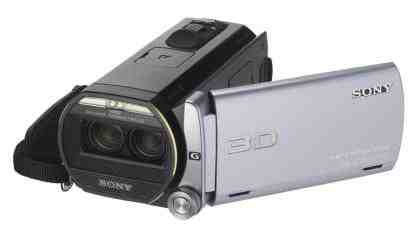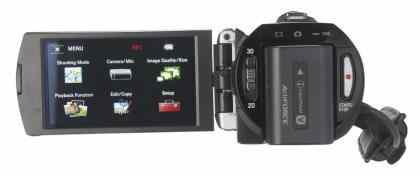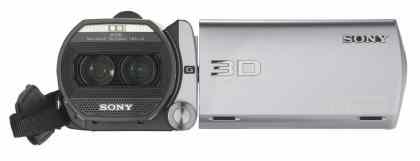The Sony HDR-TD20VE is a 3D camcorder with two 1/3.91in CMOS sensors, two Bionz image processors, a 10x optical zoom and a massive 64GB of built-in flash storage. You change between 3D and 2D camcorder modes using a switch on the back of the HDR-TD20VE, but don’t worry if you inadvertently record videos in 3D. You can still view your 3D videos in 2D should you not have access to a 3D TV.

We think HDR-TD20VE looks a bit like a monkfish, being a bit squat and wide. It’s a bit heavy, but it has a strong wrist strap and feels well balanced once it’s in your hand and you’re shooting. Even so, those with small hands may find it uncomfortable to use. We have medium-sized hands and found that all the main controls, such as the zoom lever and record button, were just within easy reach of our digits.
The HDR-TD20 has an incredibly high-quality touchscreen. It displays 1,229,000 pixels and can display 2D and 3D images. Conveniently, you can switch between the two modes using a switch to the left of the battery. The 3D effect is a bit like the Nintendo 3DS’s, and for the most part it looks fantastic, although you sometimes do get crosstalk which is an effect where you see two separate overlapping 2D images instead of one 3D image.

Mostly, the HDR-TD20’s monitor produces crosstalk when you use the zoom in 3D mode. The HDR-TD20VE has a 10x optical zoom, a 17x extended zoom for 2D, a 12x extended zoom for 3D and a 12x digital zoom. Although we did experience crosstalk when zooming, you should be okay as long as you keep the zoom within the first half of its full extension. We had no problems using the zoom in 2D mode, and although the HDR-TD20 doesn’t have the large optical zoom ranges of other camcorders, we found the 10x optical zoom perfectly adequate. It’ll be fine for most users.
The HDR-TD20 works well in dark environments, especially if you activate the built-in lamp. There’s a little noise, but that’s to be expected. The colours are fairly well reproduced, but footage looked a little over-exposed to us. It also works as well indoors as it does outdoors and we were happy with its image stabilisation. Our main criticism is that it took too long to refocus when we moved to a different room or panned quickly.

Of more importance is its 3D quality. We found the HDR-TD20VE’s 3D footage to be natural rather than gimmicky and overstated. Closer objects had a greater 3D effect and, unlike the HDR-TD20’s touchscreen, we only saw crosstalk when objects were incredibly close to the lenses. Colours and detail were just as good in 3D as 2D. As good as the HDR-TD20VE is, we were much more impressed by the 2D HDR-CX730E. We found it had better captured sharper, more detailed footage.






Leave a Reply